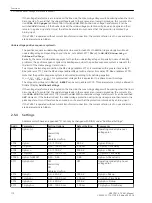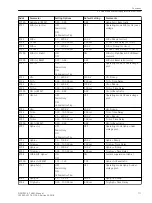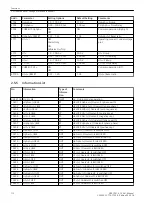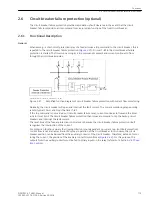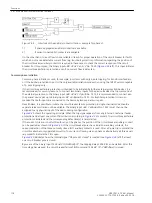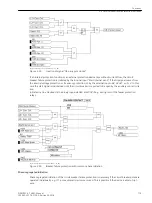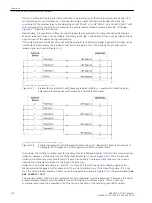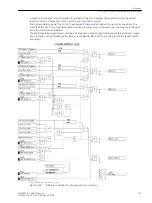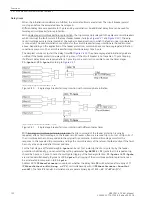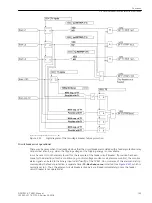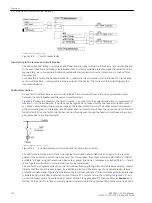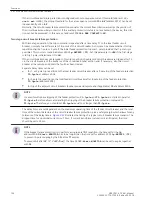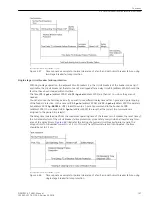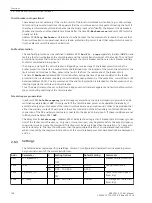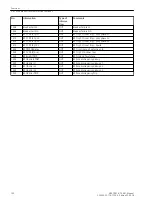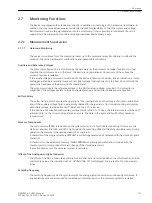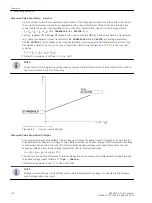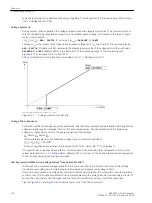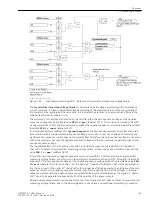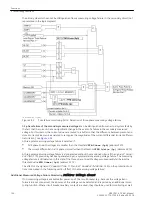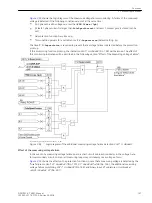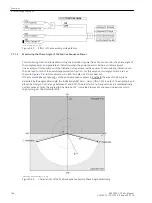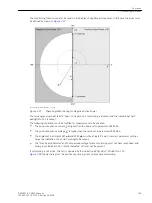
[logik-ls-gestoert-wlk-010802, 1, en_GB]
Figure 2-43
Circuit breaker faulty
Transfer trip to the remote end circuit breaker
The device has the facility to provide an additional intertrip signal to the circuit breaker at the remote line end
in the event that the local feeder circuit breaker fails. For this, a suitable protection signal transmission link is
required (e.g. via communication cable, power line carrier transmission, radio transmission, or optical fibre
transmission).
To realise this intertrip, the desired command — usually the trip command which is intended to trip the adja-
cent circuit breakers — is assigned to a binary output of the device. The contact of this output triggers the
transmission device.
End fault protection
An end fault is defined here as a short–circuit which has occurred at the end of a line or protected object,
between the circuit breaker and the current transformer set.
shows the situation. The fault is located — as seen from the current transformer (= measurement
location) — on the busbar side, it will thus not be regarded as a feeder fault by the feeder protection relay. It
can only be detected by either a reverse stage of the feeder protection or by the busbar protection. However,
a trip command given to the feeder circuit breaker does not clear the fault since the opposite end continues to
feed the fault. Thus, the fault current does not stop flowing even though the feeder circuit breaker has prop-
erly responded to the trip command.
[endfehler-ls-strwdlr-wlk-010802, 1, en_GB]
Figure 2-44
End fault between circuit breaker and current transformers
The end fault protection has the task to recognize this situation and to transmit a trip signal to the remote
end(s) of the protected object to clear the fault. For this purpose, the output command
BF EndFlt TRIP
is
available to trigger a signal transmission device (e.g. power line carrier, radio wave, or optical fibre) — if appli-
cable, together with other commands that need to be transferred.
The end fault is recognized when the current continues flowing although the circuit breaker auxiliary contacts
indicate that the circuit breaker is open. An additional criterion is the presence of any circuit breaker failure
protection initiate signal.
illustrates the functional principle. If the circuit breaker failure protection
is initiated and current flow is detected (current criteria “L*> current criterion” according to
no circuit breaker pole is closed (auxiliary contact criterion “any pole closed”), then the timer
T-EndFault
is
started. At the end of this time an intertrip signal is transmitted to the opposite end(s) of the protected object.
Functions
2.6 Circuit breaker failure protection (optional)
124
SIPROTEC 4, 7VK61, Manual
C53000-G1176-C159-5, Edition 05.2018
Summary of Contents for SIPROTEC 4 7VK61
Page 8: ...8 SIPROTEC 4 7VK61 Manual C53000 G1176 C159 5 Edition 05 2018 ...
Page 10: ...10 SIPROTEC 4 7VK61 Manual C53000 G1176 C159 5 Edition 05 2018 ...
Page 16: ...16 SIPROTEC 4 7VK61 Manual C53000 G1176 C159 5 Edition 05 2018 ...
Page 176: ...176 SIPROTEC 4 7VK61 Manual C53000 G1176 C159 5 Edition 05 2018 ...
Page 224: ...224 SIPROTEC 4 7VK61 Manual C53000 G1176 C159 5 Edition 05 2018 ...
Page 264: ...264 SIPROTEC 4 7VK61 Manual C53000 G1176 C159 5 Edition 05 2018 ...
Page 270: ...270 SIPROTEC 4 7VK61 Manual C53000 G1176 C159 5 Edition 05 2018 ...
Page 276: ...276 SIPROTEC 4 7VK61 Manual C53000 G1176 C159 5 Edition 05 2018 ...
Page 346: ...346 SIPROTEC 4 7VK61 Manual C53000 G1176 C159 5 Edition 05 2018 ...

